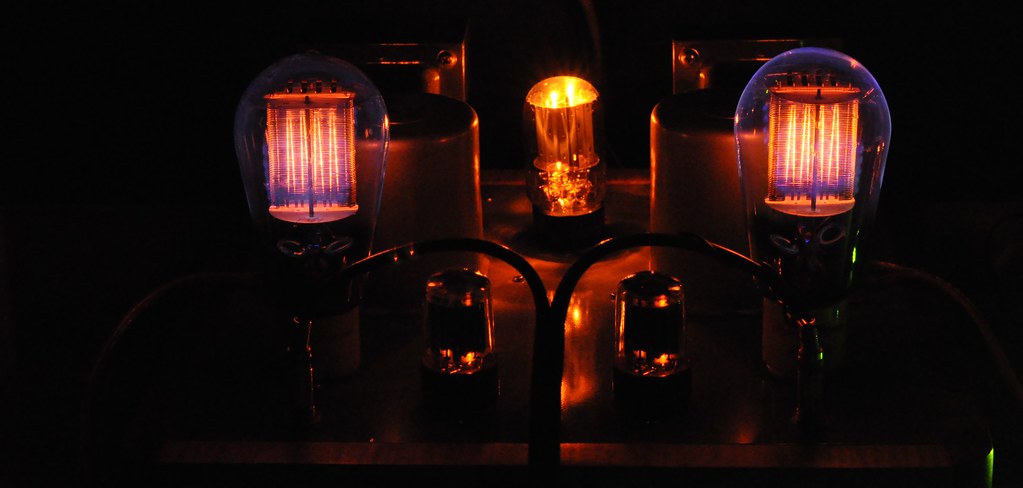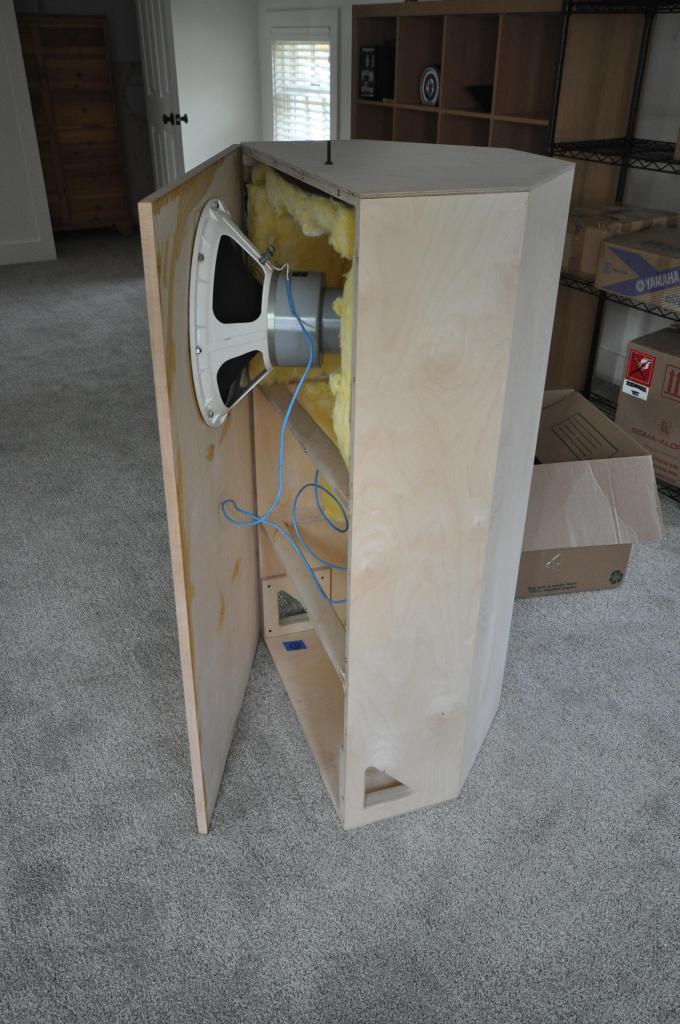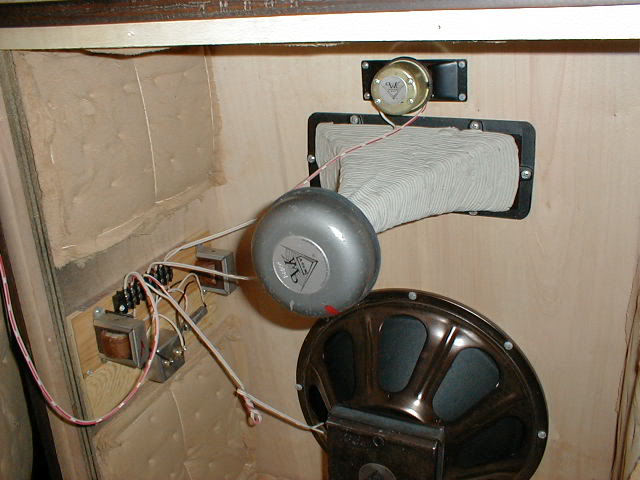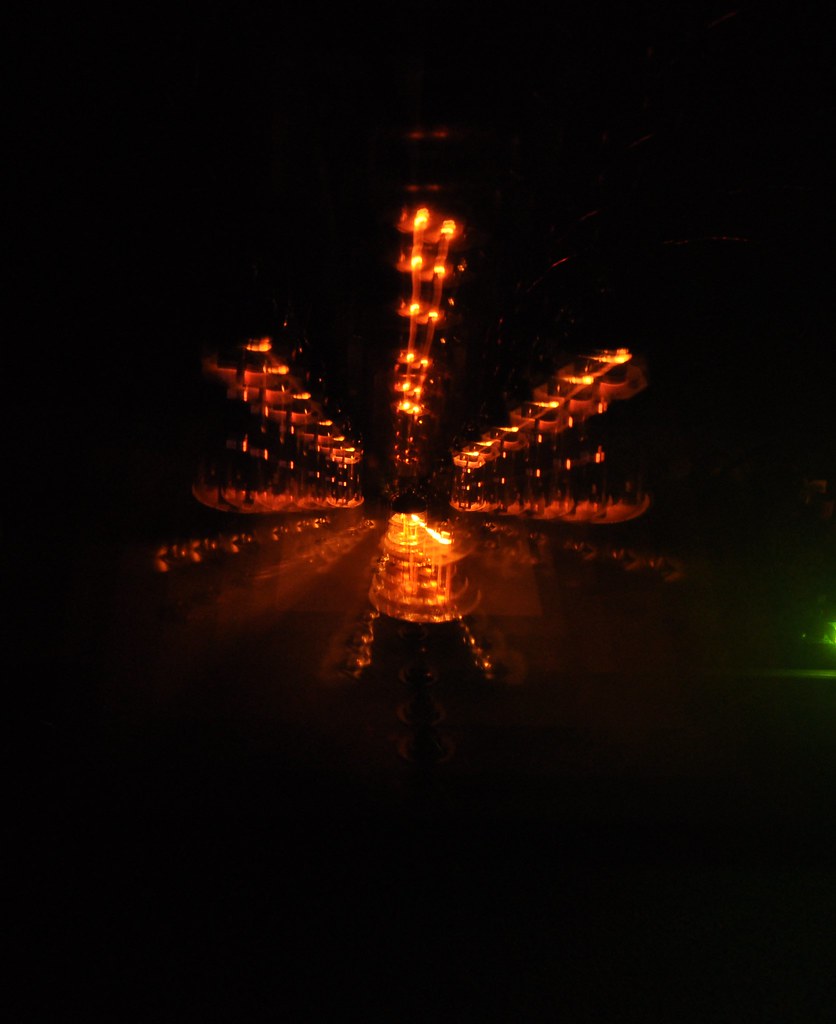Low watt output amps

halo
Posts: 5,616
in Electronics
Obviously, not all amps are powerhouses. Some Single Ended Triode (SET) tube amps put out very little power but are well regarded for their sound quality. Many years ago, when the tripath (t-amp) came out, I picked up one that was made by Sonic Impact and I really liked it. For a very modest investment, the sound quality was good (not going to get much in the way of high spl but I typically don't listen above 70db anyway).
My McCormack DNA-125 needs some repair & I cannot find the SI t-amp so I picked up the SMSL SA 36A Pro to fill in for a little while. It's doing fine, especially considering the low cost.
I am curious as to how much consideration low watt output amps get for audio enthusiast's setups.
FYI, I'm putting the McCormack back in the rig once it has been serviced .
.
My McCormack DNA-125 needs some repair & I cannot find the SI t-amp so I picked up the SMSL SA 36A Pro to fill in for a little while. It's doing fine, especially considering the low cost.
I am curious as to how much consideration low watt output amps get for audio enthusiast's setups.
FYI, I'm putting the McCormack back in the rig once it has been serviced
Audio: Polk S15 * Polk S35 * Polk S10 * SVS SB-1000 Pro
HT: Samsung QN90B * Marantz NR1510 * Panasonic DMP-BDT220 * Roku Ultra LT * APC H10
HT: Samsung QN90B * Marantz NR1510 * Panasonic DMP-BDT220 * Roku Ultra LT * APC H10
Comments
-
You're kidding, right?
3.5 wpc (absolute tops, at probably 10% THD) here.
As Rolls-Royce used to say (maybe still do) of their horsepower - adequate. DSC_0124 by Mark Hardy, on Flickr
DSC_0124 by Mark Hardy, on Flickr
I think it's easier (not to mention cheaper) to get closest to real flesh and blood music at home with low power and high sensitivity loudspeakers than the other way 'round.
PS 70 dB? That's like whispering! Even I am usually ca. 85 at my listening position, give or take.
-
Low wattage amps can sound extremely good, with the right gear/speakers. You'd need some fairly high efficiency speakers though like Horns. I wouldn't hook them up to multiple driver bigger box speakers though.
For your case, if you need an extra amp just in case one needs repairs, look for a cheap Parasound or B&K or ice amp to sit on a shelf until needed.HT SYSTEM-
Sony 850c 4k
Pioneer elite vhx 21
Sony 4k BRP
SVS SB-2000
Polk Sig. 20's
Polk FX500 surrounds
Cables-
Acoustic zen Satori speaker cables
Acoustic zen Matrix 2 IC's
Wireworld eclipse 7 ic's
Audio metallurgy ga-o digital cable
Kitchen
Sonos zp90
Grant Fidelity tube dac
B&k 1420
lsi 9's -
I had a 70w Cary 211FE that I sold. I am
Aiming for a pair of Cary 805ae set amps at 50w.
Don't expect unwavering dynamics and you can enjoy these lower powered amps.Magico M2, JL113v2x2, EMM, ARC Ref 10 Line, ARC Ref 10 Phono, VPIx2, Lyra Etna, Airtight Opus1, Boulder, AQ Wel&Wild, SRA Scuttle Rack, BlueSound+LPS, Thorens 124DD+124SPU, Sennheiser, Metaxas R2R -
Dynamics don't require big power a priori -- they do require big cabinets and high-sensitivity drivers.There's no replacement for displacement
Horns are optional, but if the goal is truly effortless reproduction and scale -- horns are hard to beat. DSC_5735 by Mark Hardy, on Flickr
DSC_5735 by Mark Hardy, on Flickr
^^ Only HF is horn loaded, but no dearth of dynamics from a 604 family member. -
The Cary Hercules is a 35 watt el34 based amp that has plenty of power for any of the speakers I run.
-
It's my lack of knowledge and laziness that I don't fully understand how lower Watt tubes produce enough oumph for speakers.
-
It's my lack of knowledge and laziness that I don't fully understand how lower Watt tubes produce enough oumph for speakers.
10-4
Well, it's simple enough in principle. The fundamental factors are the system sensitivity and impedance curve of the loudspeakers.
Modern loudspeakers co-evolved with inexpensive (on a per-watt basis) power amplification. The Acoustic Research 'acoustic suspension' loudspeakers were a breakpoint, I'd opine. The loudspeaker industry also evolved towards drivers that have very good peformance within a fairly narrow passband, and really ugly behavior outside of their passbands. This,and the ability to design high-performance crossovers "by wire" (i.e., with a computer) resulted in a sea change in the average characteristics of loudspeaker loads.
(i.e., with a computer) resulted in a sea change in the average characteristics of loudspeaker loads.
In the early days of hifi -- and consumer hifi descended directly from the development and perfection of sound for motion pictures in the 1920s and '30s -- it was hard (early on, impossible) to make high-power, low distortion, broad bandwidth amplifiers. Loudspeakers had to be designed as benign and efficient (electrically)/sensitive (in terms of SPL) loads for the amplifiers of the time. Those amplifiers had no NFB and, consequently, fairly high output impedance (low damping factor), so they were (are) very interactive with their loads.
Empathetic matching of amplifier & load was essential then (and still is, although - at least in principle - much less so "today" than "in the old days").
Paul Klipsch sold some pretty awful-sounding loudspeakers, but he himself owned good stuff (e.g., Western Electric loudspeaker components) and knew good sound.
Col. Klipsch famously quipped:"What this country needs is a really good five-watt amplifier."
http://www.stereophile.com/news/11338/#v8V1Axa1EPGRjmqh.97
Paul Klipsch reportedly listened to his company's loudspeakers using a Brook 5 watt push-pull 2A3 amplifier. I can tell you empirically that a 2A3 amplifier will make the "Heritage" Klipsch loudspeakers sound about as good as they're gonna sound
(although I'll confess that the best I ever heard my own Cornies sound was driven by a Marantz 8B that I had rehabbed for someone. The 8B is a superb PP EL34 amplifier, still one of the best sounding commercial amplifiers I've heard.)
PS C'mon over some time and give a listen to some low-power hifi!
PPS Just a slew of my opinions, of course. Low power/flea power ain't for everyone, but it is worthy of exploration, I'd opine, for anyone who is seriously interested in hifi.
Post edited by mhardy6647 on -
heh -- apropos of nothing.
Cornie guts -- replete with rope caulk damping in a vain attempt to tame the resonance of that narsty MR cast metal horn
 dampedcornyhornies by Mark Hardy, on Flickr
dampedcornyhornies by Mark Hardy, on Flickr Rcornieoly by Mark Hardy, on Flickr
Rcornieoly by Mark Hardy, on Flickr
In the solid state realm, I think one of the designers/gurus who "gets it" is the redoubtable Nelson Pass. Not for nothin' did he name on of his product lines "First Watt".
http://www.firstwatt.com/Watt's the Deal?
Dick Olsher famously remarked that “The first watt is the most important watt.” This sentiment has also been expressed by others as “Who cares what an amplifier sounds like at 500 watts if it sounds like crap at one watt?” With this in mind, I created First Watt in 1998 as a "kitchen-table" effort, exploring unusual low power amplifiers with an emphasis on sound quality.
Small amplifiers have a number of advantages over “big iron” in that very high quality can be achieved with simple Class A circuits using little or no feedback.
There is no such thing as a perfect amplifier. All audiophiles and their associated equipment have specific needs, but in each case there is such a thing as a best amplifier - the one that makes you happy...
Then:
Now:
-
Low power is a 35 watter, flea power is a 3.5 watter. Big difference, but either can sound extremely good given the right speakers.
Mark is spot on, speaker design, drivers used and the quality of those drivers will dictate what amp is needed. Many of todays big box store speakers don't need truck loads of horsepower to get them going. Consumer grade products are made to be easy peasy.....easily driven.
Horns aside, those multiple bass drivers in speakers need some power to start and stop when the frequencies dictate, within their capabilities. A bass driver not stopping when it should will result in sloppy or bloated lower bass notes. Some of that can be contributed to not enough power or poor quality drivers, or both.
Low power or flea power amps have their place in audio when matched to the right gear. HT isn't one of them though in my book.
BTW Mark, that Marantz 8b was a killer, still is when you can find them....and they go for some coinage too.HT SYSTEM-
Sony 850c 4k
Pioneer elite vhx 21
Sony 4k BRP
SVS SB-2000
Polk Sig. 20's
Polk FX500 surrounds
Cables-
Acoustic zen Satori speaker cables
Acoustic zen Matrix 2 IC's
Wireworld eclipse 7 ic's
Audio metallurgy ga-o digital cable
Kitchen
Sonos zp90
Grant Fidelity tube dac
B&k 1420
lsi 9's -
30 wpc Pass Labs Aleph 30 has never had an issue running anything I've thrown at it. SDA 1C's, LSi 9, LSi 15's. I'm sure the ultra power hungry and/or hugely inefficient speakers would cause it to faulter, but I have yet to find it's limit with my 1C's.
Many say it has to lack dynamics because it can't pump out the watts, those people have never heard it apparently.
Does it have it's limits? Sure it does, but I've heard several other higher power amps give up or just plain sound worse compared to the Aleph. It's been with me a long time for a reason.
Watts aren't the main concern. All the people that say you need 200 wpc to make it sound good are just plain uninformed.
Will every 30 wpc amp sound like the Aleph, probably not, but the point is those that only look at watts are missing a HUGE piece of the audio pie.
I am even aiming to get a First Watt (low power) amp to run my SDA's.
H9"Appreciation of audio is a completely subjective human experience. Measurements can provide a measure of insight, but are no substitute for human judgment. Why are we looking to reduce a subjective experience to objective criteria anyway? The subtleties of music and audio reproduction are for those who appreciate it. Differentiation by numbers is for those who do not".--Nelson Pass Pass Labs XA25 | EE Avant Pre | EE Mini Max Supreme DAC | MIT Shotgun S1 | Puritan Audio PSM136 Pwr Condtioner & Classic PC's | Legend L600 | Roon Nucleus 1 w/LPS - Tubes add soul! -
[caution: big ol' "FWIW" comin' at you!]
I don't consider 3.5 watts (10 dB below 35 watts) fleapower -- I consider a Danielak "DC Darling" fleapower.
http://www.oocities.org/timessquare/1965/darling.html
Single-ended 1626 output for ca. 750 mW (that's "milliwatts", i.e., 0.75 watts).
Actually, come to think of it, I'd also consider Steve Deckert's SE, triode-mode EL84 "Zen" amplifiers fleapower. They're good for something between 1 to 2 watts per channel and not quite enough oommpf for even "little girl with guitar music" at moderate levels on a pair of Klipsch Cornwalls (BTDT). SE84B zoomin by Mark Hardy, on Flickr
SE84B zoomin by Mark Hardy, on Flickr
Truly fleapower amps, in my estimation:
*require extremely sensitive loudspeakers (104 dB/watt @ 1 meter or better)
*managed expectations re: volume levels and room size (e.g., maybe OK for desktop/nearfield)
and/or
* multi-amplifier applications (e.g., the aforementioned SE-84 "Zen" amp from Decware would be a fine MR/HF or HF amplifier in a multi-amp system)
SE 2A3 amplifiers are quite real-world capable, with appropriate loudspeakers.
No, I wouldn't use 'em for explosions (i.e., HT).




